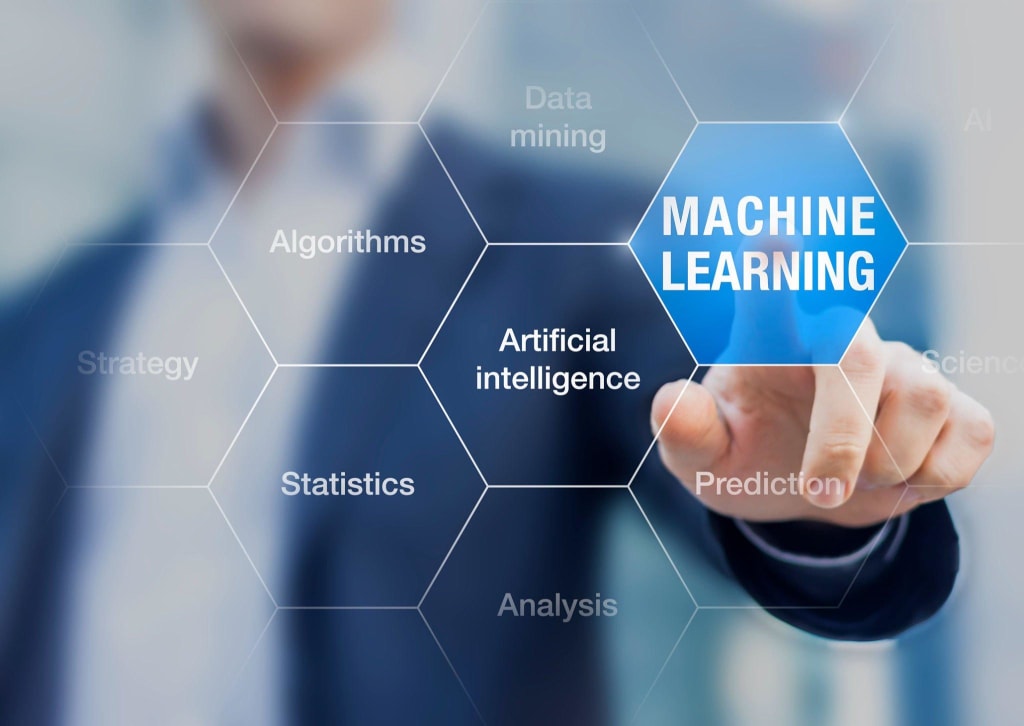Machine Learning Algorithms: A Comprehensive Guide for Data Scientists
Machine Learning Algorithms

Machine Learning in Data Science
Data Science has gone through a change in outlook because of the strong and problematic innovation known as machine learning. Machine learning has stretched the boundaries of data investigation and translation by permitting PCs to gain from data autonomously and use sound judgment without the requirement for express programming.
Machine learning is utilized to anticipate, sort, arrange, and track down extremity, and so on from the given datasets and is worried about limiting the error.
Machine learning is utilized to foresee, order, group, and find extremity from the given datasets and is worried about limiting the error. Machine learning contains numerous algorithms like SVM Calculation in Python, Bayes calculation, strategic regression, and so on. These algorithms can be utilized to prepare data to coordinate with input data and afterward to give an end to extreme precision in online master data science
Machine learning is arranged into
The basic component of data science is Machine Learning algorithms, which are a process of a bunch of rules to take care of a specific issue.
A portion of the significant data science algorithms incorporate regression, grouping, bunching strategies, decision trees, irregular forests, and machine learning procedures like supervised, unsupervised, and reinforcement learning. Furthermore, there are numerous algorithms that associations create to serve their novel requirements.
Supervised learning
It is utilized for the organized dataset. It dissects the preparation data and creates a capability that will be utilized for other datasets.
Unsupervised learning
It is utilized for crude datasets. Its fundamental assignment is to change crude data over completely to organized data. In this day and age, there is a tremendous measure of crude data in each field. Indeed, even the PC creates log documents which are crude data. Consequently, it's the main piece of machine learning.
Reinforcement Learning
Reinforcement Learning (RL) is an unmistakable field inside machine learning that focuses on teaching specialists to settle on a succession of choices in a climate, all in the quest for streamlining the all-out gathered rewards. The essential objective of RL is to engage a specialist to draw in its environmental factors, cautiously notice the outcomes coming about because of its activities, and hence alter its conduct in light of those perceptions.
In the space of reinforcement learning, the procurement of information happens through a succession of experimentation cycles. The specialist effectively investigates the climate by making moves, and in light of the resulting prizes or punishments, it uses this data to refine its arrangement or technique. A definitive goal is to reveal an ideal strategy that yields the most noteworthy conceivable long-haul combined rewards.
A fundamental idea in reinforcement learning is the Markov Decision Process (MDP), which lays out a numerical system for displaying issues including successive decision production. The MDP envelopes a few key components, including states, activities, progress probabilities, rewards, and a rebate factor that oversees the meaning of future prizes. Aggregately, these parts characterize the elements of the decision-production process inside the structure of RL.
Decision Tree
The decision tree is a broadly used supervised machine learning calculation that finds applications in errands like order and regression. It embraces a tree-like construction, wherein inner nodes represent highlights or characteristics, branches address decision rules given those credits, and leaf nodes relate to results or forecasts.
The following is a delineation of a decision tree that exhibits the characterization of whether an individual is probably going to play tennis, using weather patterns as the deciding elements:
In this model, the decision tree begins with the "Standpoint" trait, which addresses different weather patterns. The tree limbs out in light of the potential upsides of the Standpoint quality: "Radiant," "Cloudy," and "Stormy."
On the off chance that the Viewpoint is "Radiant," the tree considers the following quality, which is "Dampness." Assuming the Moistness is "High," the tree predicts "No" for playing tennis. Assuming that the Mugginess is "Typical," the tree predicts "Yes" for playing tennis.
If the Viewpoint is "Cloudy," which is a good weather pattern, the tree straightforwardly predicts "Yes" for playing tennis.
If the Viewpoint is "Blustery," the tree considers the following quality, which is "Breezy." Assuming it is "Breezy," the tree predicts "No" for playing tennis. If it isn't "Breezy," the tree predicts "Yes" for playing tennis.
This decision tree can be utilized to foresee whether an individual will play tennis given the given weather patterns. By following the parts of the tree in light of the upsides of traits, we can arrive at the anticipated result at the leaf nodes.
Machine Learning Applications
Monetary associations have begun to put vigorously in machine learning.
Various applications currently exist, for instance:
Risk The executives — Applications anticipate credit risk and counterparties default, market data oddity location
Finance — Exchanges hostile to misrepresentation, monetary data pattern investigation, the structure of trade rates, execution of momentary loan fees, a mechanized merchant that amplifies return, and limits risk.
Customer Service — Preparing representatives
Innovation — Email sifting
Medical services — Location of medical conditions
Vehicle — Example and picture acknowledgment, self-driving vehicles
Telecoms — Facial acknowledgment, security checking
Conclusion
This article zeroed in on what the machine learning process is and presented how machine learning works. It likewise illustrated the varieties of machine learning algorithms.






Comments (1)
Very informative! Great work! Wonderful and Gazoogabloga!